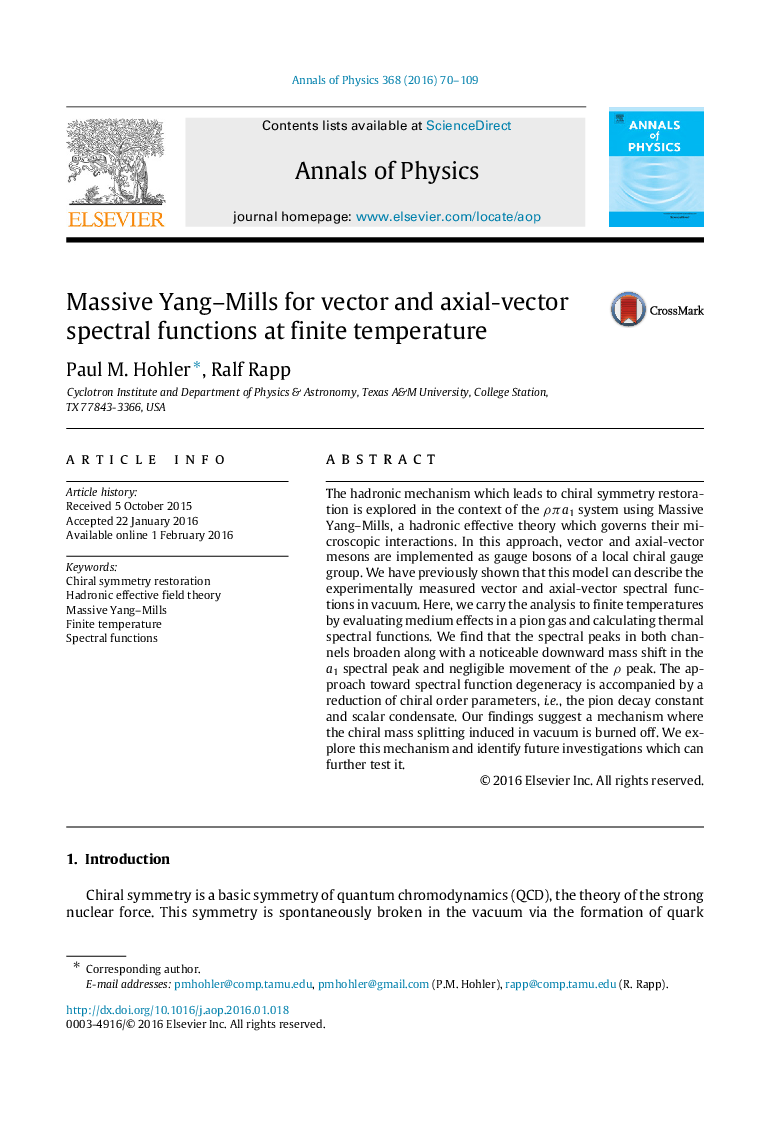| Article ID | Journal | Published Year | Pages | File Type |
|---|---|---|---|---|
| 1854478 | Annals of Physics | 2016 | 40 Pages |
The hadronic mechanism which leads to chiral symmetry restoration is explored in the context of the ρπa1ρπa1 system using Massive Yang–Mills, a hadronic effective theory which governs their microscopic interactions. In this approach, vector and axial-vector mesons are implemented as gauge bosons of a local chiral gauge group. We have previously shown that this model can describe the experimentally measured vector and axial-vector spectral functions in vacuum. Here, we carry the analysis to finite temperatures by evaluating medium effects in a pion gas and calculating thermal spectral functions. We find that the spectral peaks in both channels broaden along with a noticeable downward mass shift in the a1a1 spectral peak and negligible movement of the ρρ peak. The approach toward spectral function degeneracy is accompanied by a reduction of chiral order parameters, i.e., the pion decay constant and scalar condensate. Our findings suggest a mechanism where the chiral mass splitting induced in vacuum is burned off. We explore this mechanism and identify future investigations which can further test it.
